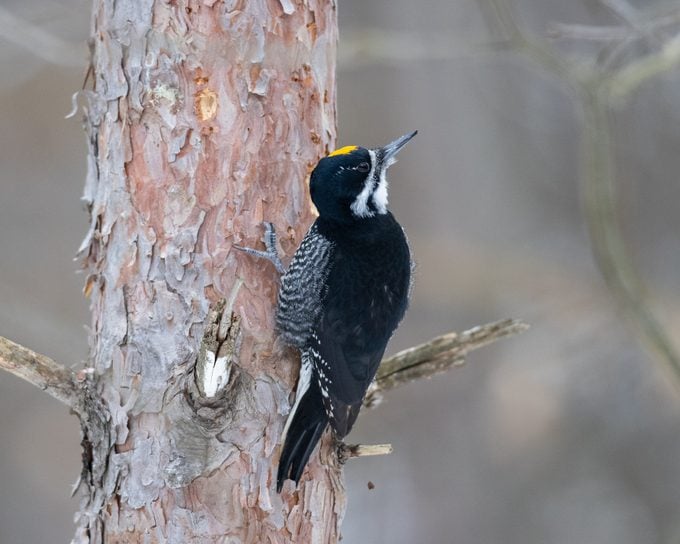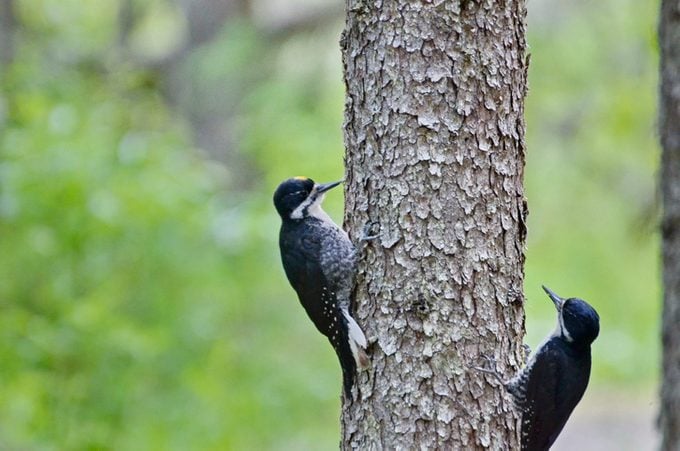How to Identify a Black-Backed Woodpecker
Updated: Sep. 27, 2023
If you live in the Northwest near a recently burned forest, you might see a black-backed woodpecker. Learn how to identify these unique birds.
What Does a Black-Backed Woodpecker Look Like?

The black-backed woodpecker blends in perfectly with its habitat of choice: fire-charred forests. Males have ashy black feathers on their back, along with white and black sides, white spots on the wings, and white bellies. Their heads are colored mostly black, with a white stripe above the beak and a prominent yellow spot at the top.
Females resemble males except for the yellow spot at the crown. Their three-toed feet serve as another notable physical feature.
Meet more types of North American woodpeckers you should know.
Black-Backed Woodpecker Range and Habitat

Black-backed woodpeckers live year-round in the Northwest, particularly in parts of Idaho, Montana, Washington, Oregon, California and Alaska. They’ll also appear in northern Minnesota, Wisconsin, New York, and Maine. Generally, they tend to inhabit regions with recently burned forests or lots of dead trees.
In portions of their range with fewer burned trees, they’ll also visit bogs or areas with bark beetle outbreaks. Once these woodpeckers have found a suitable habitat, they’ll often remain there for several years. In some years, winter irruptions might bring them farther south than usual.
Discover mind-blowing woodpecker facts you should know.
Diet
The main reason black-backed woodpeckers prefer burned forests? One of their major food sources is wood-boring beetle larvae, which are easy to find in recently burned trees. These woodpeckers will remain in one place on the tree’s trunk for long periods of time, where they’ll peck through the bark to find the food they’re looking for in beetle-constructed tunnels. They’ll also eat other types of beetles and insects, spiders, nuts, and some fruits.
Learn how the ladder-backed woodpecker survives in harsh desert conditions.
Nesting Habits

Black-backed woodpeckers are cavity nesters that build their nests in dead trees. Males take the primary role in nest excavation. A typical clutch includes two to six white eggs, and nestlings remain with their parents for three to four weeks.
What does a baby woodpecker look like?
Calls and Sounds
Similarly to other woodpeckers, black-backed woodpeckers give a high-pitched pik call. When disturbed, they’ll also give a rattling growl call.
Next, learn how to tell the difference between downy vs hairy woodpeckers.




















